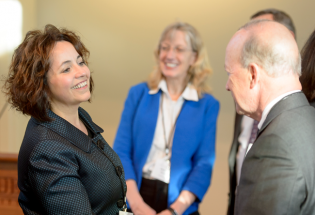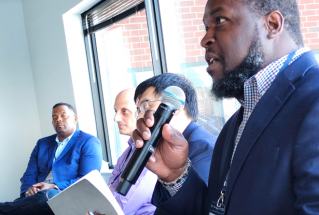Engagement offices look to ‘move at the speed of business’ and hold industry to the same standard
Excerpted from the May 2023 issue of University-Industry Engagement Advisor. UIDP members can view the entire issue here.
Managers of corporate engagement offices at leading research universities have long talked about the importance of “moving at the speed of business” to eliminate one of the key complaints that industry has had about academia. And they have been more than willing to do that — not only with express licenses and other streamlined agreement models, but with other changes in strategies and procedures. However, some insist that having accomplished that goal, they may actually be “out-speeding” their corporate counterparts.
“I think it’s important, because at end of the day industry is our buyer, and if we can’t move fast enough the buyer moves on,” says Keith Marmer, chief innovation & economic engagement officer at the University of Utah and head of its PIVOT Center. “We want to be physically as fast or faster than our industry counterparts — ranging from tiny start-ups to Fortune 100 companies.”
A few years ago, he says, PIVOT developed a tracking system for all its contracts — CDAs, NDAs, and so on. “We know how long [a document] is with us and with our partner, and we know that over the past year we are operating from one to seven times faster than our industry counterparts as far as turnaround of documents,” Marmer reports. And that’s just the “transactional” side. He cites improvement in the speed at which technologies are moved through the pipeline as well.
“We know in our work that time is often not our friend, and that is a reminder I give my team often,” adds Ofra Weinberger, PhD, senior director of commercialization and licensing with Columbia Technology Ventures and associate vice president for intellectual property & technology transfer at Columbia University. “We have all experienced markets changing under us, the IP landscape relating to any particular technology changing, and interests and particular priorities changing on the industry side. So, once we have found a suitable partner for our technology, we know that we must move ahead as quickly as possible to make sure the rights are documented in an agreement that gives our commercialization partner the ability to move into the next stage of technological development; moving it to the marketplace is very important.”
In short, she summarizes, “that is an area of tremendous emphasis as we think about what we do, how to do it better, and how to make our process as efficient and as navigable as possible.”
“Corporate relations officers and programs must function at the speed of business; we have to understand business timelines,” says Anne O’Donnell, senior executive director of corporate relations at UC San Diego. Like Marmer, O’Donnell insists that universities absolutely do that. “There is a perception that the university is slow, when in most cases — like [with] contracts — we’re faster than any business,” she asserts. “I think if you’re really customer service-focused, you want to function at the pace of business. Respond to e-mails if not the same day then at least within 24 hours, so they know they’ve been heard.”
And it’s not just speed in terms of absolute time, she continues. “We’re on an academic calendar; business is not,” she notes. “We have to appreciate what happens in their cycle. On our database we put the fiscal year of the company, which is not obvious to people. But I want to know if I’m at the beginning of the business budget cycle, where they can discuss programs and tee up funding, or at the end of the year — is there money left over? That’s a different conversation. We want to make our colleagues in business successful; I want to appreciate their metrics.”
Still, she notes, it’s not always the university that slows things down. O’Donnell recalls a recent negotiation that was nearing the finish line, but the industry partner insisted on changing one line in the agreement. “That starts the clock over. We would have signed it [that day]. It was their side” that threw the wrench, she says.


